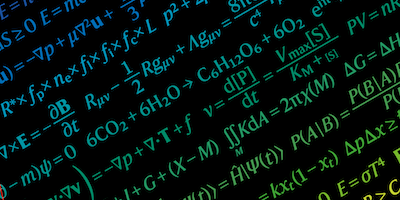Abstract
A striking feature of metal oxide chemistry is the unusual electronic and chemical behaviour of Cu(I) and Ag(I): a case in point is that detailed understanding of Cu–O bonding is essential to the theory of high-temperature copper oxide superconductors. Both cations are usually coordinated in a linear fashion to two oxygens, particularly for Cu(I). In many compounds, the Cu(I) and Ag(I) cations also adopt close-packed (and related) configurations with short metal–metal distances that are strongly suggestive of the occurrence of metal–metal bonding1,2 despite their formal nd10 configuration. Such observations have been explained3,4 by invoking the participation in bonding of electronic orbitals of higher principal quantum number—that is, (n + 1)s and (n + 1)p—accompanied by the creation of d-orbital holes on the metal ion. To test this hypothesis, we have used a recently developed method of quantitative convergent-beam electron diffraction5 combined with X-ray diffraction to map the charge-density distribution in the simple oxide Cu2O, the results of which we then compare with electronic-structure calculations. We are able to image directly the d holes on the copper atoms, and also demonstrate the existence of Cu–Cu bonding in this compound.




Similar content being viewed by others
References
Jansen,M. Homoatomic d10-d10 interactions: their effects on structure and chemical and physical properties. Angew. Chem. Int. Edn. Engl. 26, 1098–1110 (1987).
Pyykkö,P. Strong closed-shell interactions in inorganic chemistry. Chem. Rev. 97, 597–636 (1997).
Orgel,L. E. Stereochemistry of metals of the B sub-group. Part I, ions with filled d-electron shells. J. Chem. Soc. 4186–4190 (1958).
Merz,K. M. & Hoffman,R. d10-d10 interactions: multinuclear copper(I) complexes. Inorg. Chem. 27, 2120–2127 (1988).
Zuo,J. M. Quantitative convergent beam electron diffraction. Mater. Trans. JIM 39, 938–946 (1998).
O'Keeffe,M. Madelung constants for the C3 and C9 structures. J. Chem. Phys. 38, 3035–3038 (1963).
Coppens,P. X-ray Charge Densities and Chemical Bonding (Oxford, New York, 1997).
Koritsanszky,T. et al. Accurate experimental electronic properties of DL-proline monohydrate obtained within 1 day. Science 279, 356–358 (1998).
Stewart,R. F. & Spackman,M. in Structure and Bonding in Crystals (eds O'Keeffe, M. & Navrotsky, A.) 279–298 (Academic, New York, 1981).
Smart,D. J. & Humphreys,C. J. The application of electron diffraction to determining bonding charge densities in crystals. Int. Phys. Conf. Ser. 52, 211–214 (1980).
Restori,R. & Schwarzenbach,D. Charge density in cuprite, Cu2O. Acta Crystallogr. B 42, 201–208 (1986).
Kirfel,A. & Eichhorn,K. Accurate structure analysis with synchrotron radiation, the electron density in Al2O3 and Cu2O. Acta Crystallogr. A 46, 271–284 (1990).
Stewart,R. F. Electron population analysis with rigid pseudoatoms. Acta Crystallogr. A 32, 565–574 (1976).
Rez,D., Rez,P. & Grant,I. Dirac-Fock calculations of X-ray-scattering factors and contributions to the mean inner potential for electron-scattering. Acta Crystallogr. A 50, 481–497 (1994); correction 53, 522 (1997).
Blaha,P., Schwarz,K. & Luitz,J. WIEN97 (Vienna Univ. of Technol., Vienna, 1997).
Blaha,P., Schwarz,K., Sorantin,P. & Trickey,S. B. Full-potential, linearized augmented plane-wave programs for crystalline systems. Comput. Phys. Commun. 59, 399–415 (1990).
Marksteiner,P., Blaha,P. & Schwarz,K. Electronic structure and binding mechanism of Cu2O. Z. Phys. B 64, 119–127 (1986).
Zuo,J. M., Blaha,P. & Schwarz,K. The theoretical charge density of silicon: experimental test of exchange and correlation potentials. J. Phys. Condens. Matt. 9, 7541–7561 (1997).
Ghijsen,J. et al. Electronic structure of Cu2O and CuO. Phys. Rev. B 38, 11322–11330 (1988).
Acknowledgements
We thank A. Avilov for discussions, and D. Schwarzenbach for providing the X-ray data. This work was supported by the NSF.
Author information
Authors and Affiliations
Corresponding author
Rights and permissions
About this article
Cite this article
Zuo, J., Kim, M., O'Keeffe, M. et al. Direct observation of d-orbital holes and Cu–Cu bonding in Cu2O. Nature 401, 49–52 (1999). https://doi.org/10.1038/43403
Received:
Accepted:
Issue Date:
DOI: https://doi.org/10.1038/43403
- Springer Nature Limited
This article is cited by
-
Interaction, interpretation and representation: the construction and dissemination of chemical knowledge from a Peircean semiotics perspective
Foundations of Chemistry (2024)
-
Direct imaging of electron density with a scanning transmission electron microscope
Nature Communications (2023)
-
Measurement of charges and chemical bonding in a cryo-EM structure
Communications Chemistry (2023)
-
A commentary on Weisberg’s critique of the ‘structural conception’ of chemical bonding
Foundations of Chemistry (2023)
-
Geminal-atom catalysis for cross-coupling
Nature (2023)





